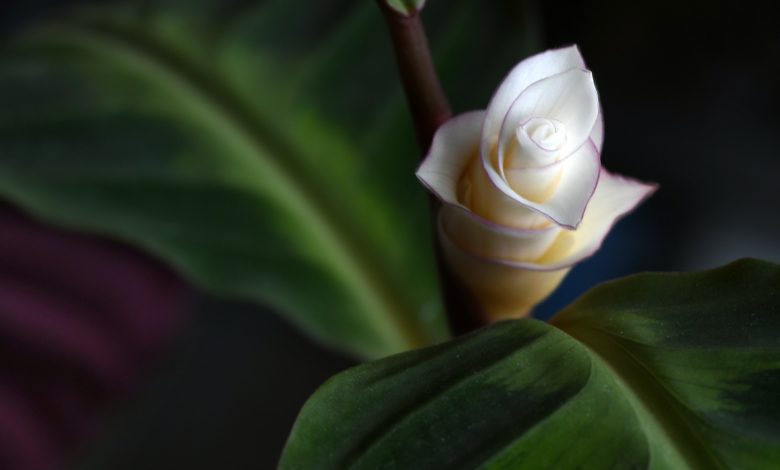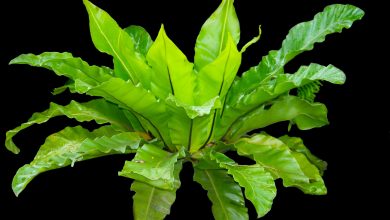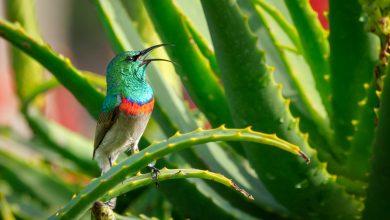The Best Plants For A North Facing Window? Low Light Plants

People often talk about south-facing windows and the amount of sunlight they can provide. But what if you don’t have a viable south-facing window for plants? Or what if you have a north-facing window that is begging to be decorated with an air-purifying houseplant?
Luckily, there are many beautiful plants that can grow effectively even when looking out of a north-facing window. These are known as low light plants, and we’ll go over nine of the finest for you to consider.
9 Best Low Light Plants
Each of these nine plants can bring a new attitude into a room and are not fussy about sunlight. Plus, they are all easy to care for and perfect for beginners.

1. Nerve Plant
Fittonia
Level of Care: Intermediate
Size: 3” to 6” in height, 12” in width
Water: Keep moist but not overwatered
Soil: Well-draining and slightly acidic soil works best
Fertilizer: Feed weekly during the growing season with tropical 5-5-5 balanced fertilizer
One of the coolest looking house plants is the Fittonia, known as the nerve plant or mosaic plant. The name comes from the vivid veins that highlight each variety of nerve plant in an array of colors. Some consider the most popular vein color to be the striking silver-white on a dark green leaf. Other available colors include green, pink, and white.
The nerve plant can add interest to any room, but it does require a bit of maintenance. One of the challenges of growing a perfect nerve plant is that it must be kept continuously moist, while at the same time, it does not want to be sitting in water that will not drain well. The plant also prefers a high level of humidity. To achieve the constant moisture and high humidity, you will want to frequently mist the plant with a spray bottle.

2. ZZ Plant
Zamioculcas zamiifolia
Level of Care: Beginner
Size: 16” to 28” tall; for a smaller version, try the dwarf Zamicro
Water: Less is more when it comes to the ZZ plant; be careful not to overwater
Soil: A well-draining potting mix is perfect
Fertilizer: No fertilization is necessary
Unlike the nerve plant, the ZZ plant is much more forgiving of a forgetful gardener. Not only can it handle low light with no problem, but it can also tolerate infrequent or erratic watering. The one area that you can focus on when caring for your ZZ plant is to dust the leaves every now and then. Dusting the leaves will leave them glistening when a ray of light glances across the surface.
ZZ plants feature thick stems that grow in a steadily arcing pattern as its glossy green leaves grow larger. The leaves are oval-shaped, and to the untrained eye, the plant may appear fake. That is due to both its waxy sheen, as well as its “plant it and forget it” level of care.

3. Snake Plant
Dracaena trifasciata
Level of Care: Beginner
Size: 4’ tall and 2’ wide at full maturity
Water: Water at the base of the plant once the soil has dried out completely and try not to get water on the leaves
Soil: A well-draining potting mixture is preferred
Fertilizer: Fertilizer is unnecessary, but laying down a balanced fertilizer once every other month can help during the growing season
A snake plant is perfect for those who appreciate adding an element of new style to their space without having to spend much time maintaing it. Snake plants are hardy growers and are best watered infrequently. While snake plants prefer bright light, they can still grow well in low light.
It’s also easy to take a part of your snake plant and create an entirely new plant. This process is called propagation. Clip one of the leaves at its base and plant it in a new container under the same conditions as your current plant. You should notice growth after a couple of weeks and can help give the plant a push with a little succulent fertilizer.

4. Spider Plant
Chlorophytum comosum
Level of Care: Beginner
Size: 12” tall and 24” wide at full maturity
Water: Spider plants will not mind if you forget to water them
Soil: Moist, well-draining potting soil works best
Fertilizer: Fertilize every month or so during the growing season and hold off if you notice brown leaf tips
The spider plant is another option that is perfect for beginner gardeners or those who appreciate an easy growing house plant. The narrow green leaves of this enchanting house plant feature striking colors as the leaves grow out and curl down at random intervals, giving the plant a spider-like appearance.
One of the best places to put them is in a hanging basket, which allows its long and slender leaves to slink from the pot and colorfully decorate the outside of the basket.

5. Calathea
Calathea
Level of Care: Beginner
Size: 24” tall and 24” wide at full maturity
Water: Use distilled water and keep the soil moist, but not too wet
Soil: Use a porous, well-draining soil mixture that is peat-moss based
Fertilizer: Fertilization is not necessary
If you would like to add new and interesting patterns to your space, consider one of the many attractive varieties of Calathea plants. Some of the more popular versions are the Calathea ornata, orbifolia, rattlesnake plant, eternal flame, peacock plant, and zebra plant. In total, there are over 300 different types to choose from.
One of the fun aspects shared by most varieties of these Brazilian natives is a rich purple underside coloring the bottom of each large leaf. With so many unique varieties available, you are bound to find one that jives with your vibe. The cherry on top of this low-light sundae is how easy Calathea plants are to care for.
As a tropical plant, though, Calatheas do prefer high humidity, so keep a spray bottle nearby. Putting a layer of pebbles between your pot and the base it sits on can aid in both drainage and added humidity.

6. Monstera
Monstera deliciosa
Level of Care: Intermediate
Size: 24” tall and 24” wide at full maturity
Water: Water when the top layer of soil has completely dried out
Soil: Peaty, well-draining soil is ideal for Monstera plants
Fertilizer: Apply a balanced liquid fertilizer once a month during the growing season
Monstera plants can somewhat resemble a Calathea with its large green leaves. The differences, however, are easy to point out. Whereas Calathea plants feature unique stripes and designs, Monstera plants are uniformly dark green in color. Monstera plants are distinguished by leaves that feature unique cutouts as if someone took scissors to each leaf to give it a new look. The look of Monstera leaves has led to its nickname “Swiss-cheese plant.”
In its natural habitat in Mexico, Monstera plants like to climb up trees. To help your plant grow properly, find some moss support sticks or a trellis to let it climb. The roots of the plant may become unruly. If so, you should be able to easily tuck them back inside the pot. Make sure to pick a pot with drainage holes on the bottom.

7. Pothos Plants
Scindapsus
Level of Care: Beginner
Size: 8” tall
Water: Less is more when it comes to watering pothos plants
Soil: A potted cactus mix will work well
Fertilizer: Use a balanced fertilizer once a month during the growing season
Pothos are some of the most popular houseplants due to their resilient and uniquely designed leaves combined with ease of care. Pothos is a type of trailing vine that will crawl wherever you’d like to direct it. Some popular placements include being draped in hanging baskets and around mirrors, windows, and trellises.

8. Weeping Fig Tree
Ficus benjamina
Level of Care: Intermediate
Size: 3’ to 6’ tall at full maturity
Water: Water when the top of the soil is completely dry, which is usually once a week
Soil: Any well-draining potting soil will work
Fertilizer: Fertilize generously during the growing season
Imagine a pothos leaf on a small shrub, and you will have a rough estimation of what a weeping fig tree looks like. If you have the space for it, a weeping fig can bring a newfound liveliness into any space. The majority of the maintenance involved is needing to trim it back when it becomes unruly.

9. Peace Lily
Spathiphyllum wallisii
Level of Care: Beginner
Size: 3’ tall and 3’ wide with ten-inch long leaves
Water: Keep the soil moist and water more often if the plant is drooping
Soil: Well-draining potting soil works best
Fertilizer: Fertilize about once every six weeks during the growing season, but use either half a dose or dilute with water
Peace lilies, also known as spathe flowers or white sails, bloom most effectively in low light. If you have a dark lonely corner in your house, consider sprucing it up with the Spathiphyllum wallisii. Even if you do not have a dark, brooding corner that desperately could use some color, the peace lily will grow efficiently as close as four feet from a window. While peace lilies are easy to care for, they do require you to repot them once a year.



